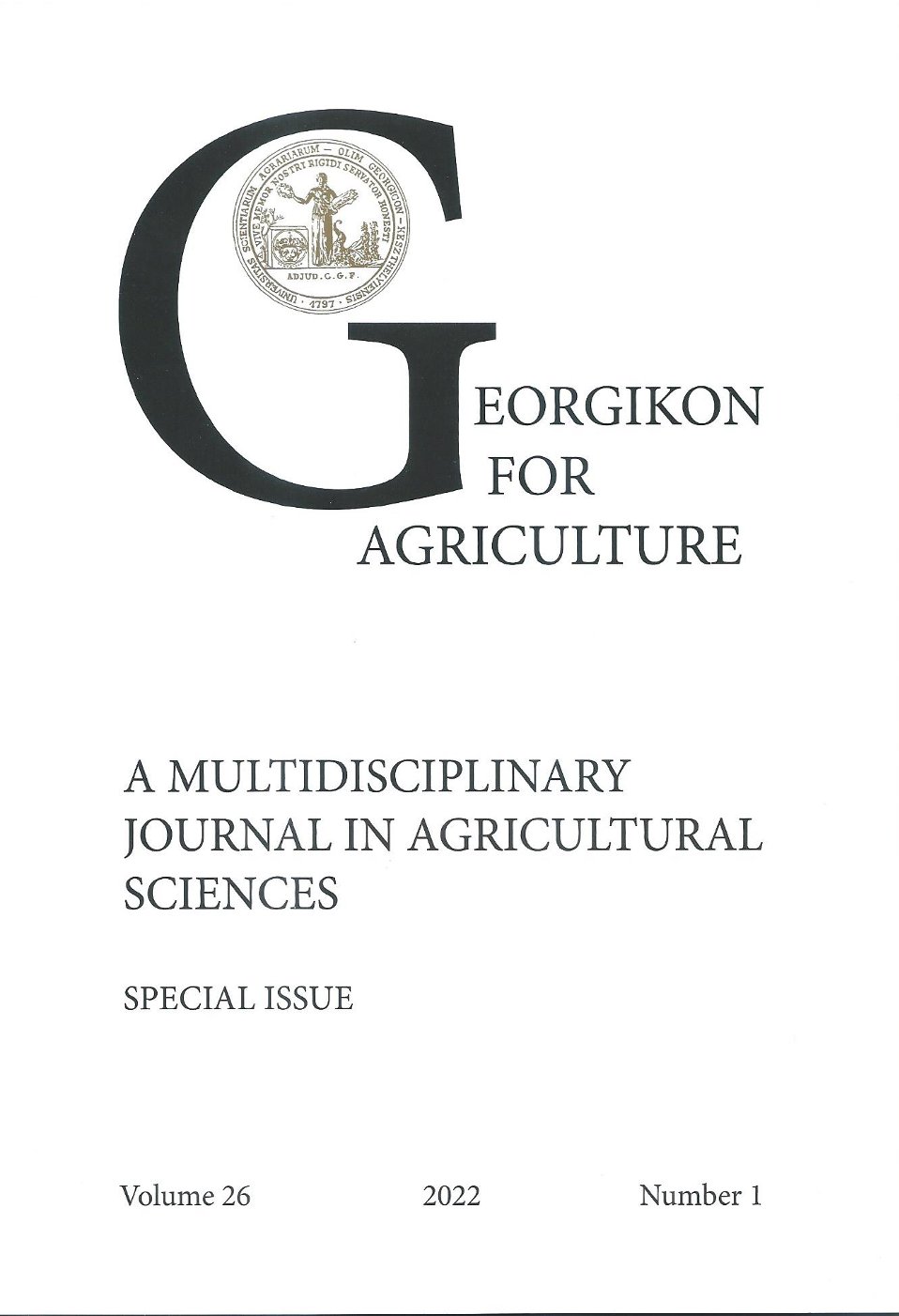A kukorica fuzáriumos szártőkorhadásával szembeni rezisztenciavizsgálat módszertani értékelése provokációs kísérletekben
Kulcsszavak:
kukorica, fuzáriumos szártőkorhadás, betegség-provokációs kísérlet, mesterséges fertőzési módszerek, fajtaelismerésAbsztrakt
A kukorica fuzáriumos szártőkorhadása kötelezően vizsgálandó betegségforma az állami fajtaelismerés során. Annak érdekében, hogy évről-évre megfelelő fertőzöttségi körülményeket biztosítsunk a vizsgálatokhoz mesterséges fertőzéses kísérletet állítottunk be 2015-ben és 2019-ben Röjtökmuzsajon és Martonvásáron. Kétféle fertőzési módot vizsgáltunk, talajfertőzést és fogvájós szárfertőzést. Mindkét esetben a Fusarium verticillioides és a Fusarium graminearum izolátumával fertőztünk 3 különböző fogékonyságú kukorica genotípust. Eredményeink alapján a kevésbé provokatív talajfertőzéses módszer is alkalmas a genotípusok megkülönböztetésére a fogékonyság szempontjából. Az izolátumok közül a Fusarium garminearum bizonyult patogénebbnek a fogvájós módszer során. A talajfertőzés esetében a Fusarium verticillioides nagyobb mértékben fertőzte a közepesen fogékony genotípust, mint a Fusarium graminearum. Érdemes a fertőzést mindkét fajjal elvégezni, hiszen a természetes körülmények között is mindkét faj előfordul.
Hivatkozások
Bottalico, A. 1998. Fusarium diseases of cereals: Species complex and related mycotoxin profiles, in Europe. Journal of Plant Pathology. 80. 85-103.
Dodd, J.L. 1980. The role of plant stresses in development of corn stalk rot. Plant Disease. 64. 533-537.
Hinfner K. és Békési P. 1969. Kukoricahibridek fuzáriumos eredetű megbetegedésének rezisztenciavizsgálati módszerei. Különlenyomat az 1969. évi Országos Fajtakísérletek című kiadványból 253-267.
Logrieco, A., Mulè, G., Moretti, A. and Bottalico, A. 2002. Toxigenic Fusarium species and mycotoxins associated with maize ear rot in Europe. European Journal of Plant Pathology. 108. 597–609
Malvick, D.K. 1995. Corn stalk rots. Department of Crop Sciences, University of Illinois at Urbana-Champaign, Report on plant disease. 200. 1-6
McKeen, W.E. 1951. A corn root- and stalk-rot complex hitherto known as Giberella zeae stalk rot. Phytopathology. 41. 26
Mesterhazy, A., Toldine Toth, E., Szel, S., Varga, M. and Toth, B 2020. Resistance of Maize Hybrids to Fusarium graminearum, F. culmorum, and F. verticillioides Ear Rots with Toothpick and Silk Channel Inoculation, as Well as Their Toxin Production. Agronomy. 10(9). 1283.
Ruga-Kovács B. 2016. A kukorica legfontosabb betegségeinek jelentősége a fajtaminősítés tükrében Agrofórum. 27(67). 88-90.
Szőke Cs. 2011. Kukorica genotípusok fuzáriumos szártőkorhadása és a szár szöveti szerkezete közötti összefüggés-vizsgálatok és hatásuk a szárszilárdságra. Doktori (PhD) értekezés
Yang, Q, Yin, G, Guo, Y, Zhang, D, Chen S. and Xu, M. 2010. A major QTL for resistance to Gibberella stalk rot in maize. Theor. Appl. Genet. 121. 673-687
Young, H C 1943. The toothpick method of inoculating corn for ear and stalk rots. Phytopathology. 33. 16.
Letöltések
Megjelent
Folyóirat szám
Rovat
License
Copyright (c) 2022 Kovács Blanka, Pécs Márton, Gergely László, Szőke Csaba

This work is licensed under a Creative Commons Attribution-NonCommercial-NoDerivatives 4.0 International License.
The articel is under the Creative Commons 4.0 standard licenc: CC-BY-NC-ND-4.0. Under the following terms: You must give appropriate credit, provide a link to the license, and indicate if changes were made. You may do so in any reasonable manner, but not in any way that suggests the licensor endorses you or your use. You may not use the material for commercial purposes. If you remix, transform, or build upon the material, you may not distribute the modified material. You may not apply legal terms or technological measures that legally restrict others from doing anything the license permits.




 Georgikon for Agriculture
Georgikon for Agriculture